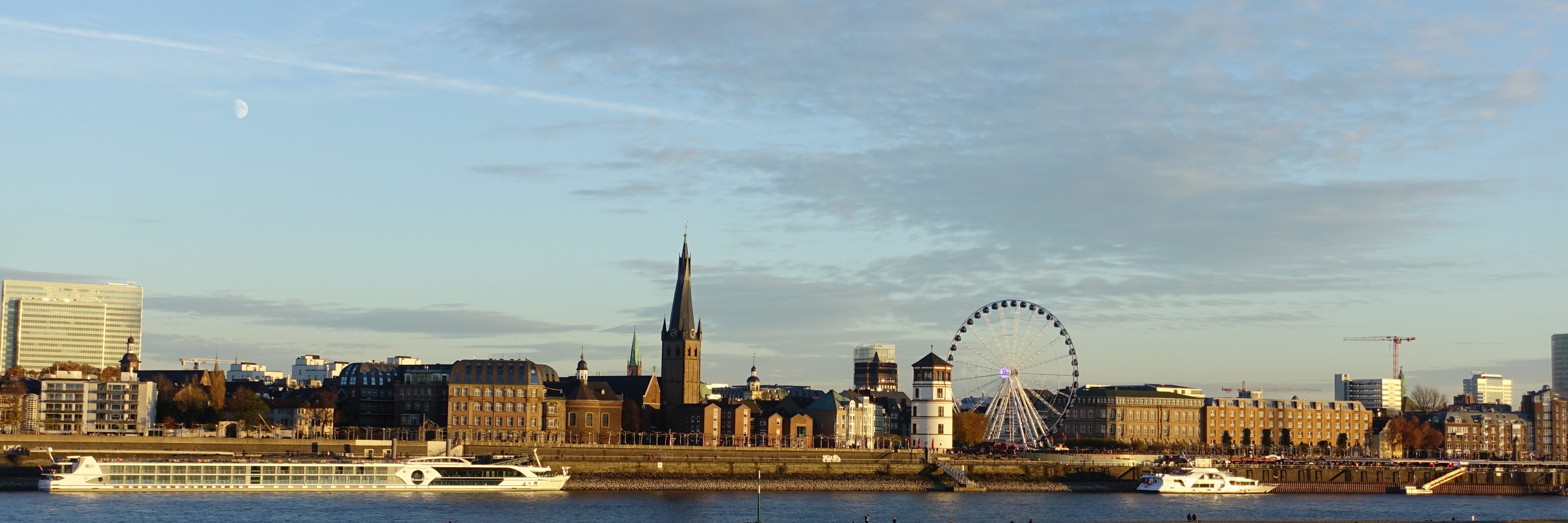Germany is one of the most densely-populated countries in Europe, and the Rhein-Ruhr region, where I live, is the most densely-populated in Germany.
But thanks to German regional planning, there are enclaves of nature even here. And they’re not created thanks to some misguided Corbusier-like mix of giant residential housing blocks surrounded by parks. The vast majority of Düsseldorfers live in 4-5 story buildings, not high-rises.
Yet the city is still compact, with beautiful greenery in the middle and at the edges. The key here is small parks and enclaves. One example is the Urdenbach marshes. Ages ago, the Rhein changed its path near a place called Urdenbach. It stopped following large curve and began flowing more directly, in a straighter course. Since the entire area of the former curve was only a few meters above the new course of the Rhine, it flooded whenever the Rhine flooded. This created a marshy wetland area.
Long story short, over the years the wetland was partially destroyed, some used for agriculture, some paved over. The old course of the Rhein was hemmed in by dams, and gradually dried into a small stream. In 2013 the city, and local government, and local nature organizations (these things take lots of consultation) decided to increase and broaden the flow of the “Altrhein”, and make parts of this nature preserve into a genuine marsh again. Here’s the picture from the official city-planning brochure (g).

The red is the small stream of the former Rhein, the light-blue is the part that would be be reclaimed as a wetland. The two yellow dots represent large breaches in the dam, letting the water flow in the lower area to the east. On the right, you see a residential area, the lower-middle class suburb of Hellerhof. On the left, agricultural land and rich pasture for sheep and cattle. I’ll come back to both the suburb and the fields a bit later.
The plan worked. The wetlands brought birds. In only one 5- minute span on a bench, I saw coots, cormorants, gray herons, swans, ducks, Northern geese, Nile geese, and grebes. And was surrounded by the awkward croaking of horny frogs. The brochure from which this photo was taken lays out the strategy the local authorities pursued after after breaching the dam: nothing. They just let the water find its course and build ponds of its own design. A few dead trees were scattered in the riverbed to adjust its flow. And then allowed to rot, creating natural temporary dams. Existing trees which couldn’t tolerate the higher moisture are slowly collapsing, leaving room for more moisture-tolerant trees.
The marsh area is only narrow strip hemmed in by farmers’ fields to the southwest and a thickly-settled suburb to the northeast. But still, it’s there. And it’s beautiful:
Other nearby areas have also been declared nature areas. Some of these areas cover no more ground than, say, a department store (example not chosen at random). Here’s part of one of them, near the suburb of Baumberg:

This meadow directly abuts a farmer’s field, and is just a few hundred meters away from a suburb. But since it’s been left in its natural state, it’s enough to provide nesting and hunting grounds for hundreds of birds, frogs, mice, and other creatures. And a soothing vista for human passers-by.
Regional planners in the Rhineland don’t have vast open spaces to work with, so they make the most of what they have in a spirit of compromise, creating small but viable islands of nature right next to streets, railroad tracks, high-power lines (one of which goes right through the Urdenbach Marshes), crop fields, and housing complexes. Give animals an area in which they are completely undisturbed — even a small area — and they’ll be able to adapt to nearby human influence.
All of this nature-civilization compromise takes careful planning, much consultation with “stakeholders”, a strong state, and a sophisticated strategic vision. All things which Germans are quite good at creating and maintaining. It makes their sophisticated regional-planning system (pdf) a model for the world. Other countries would do well to adapt it, before it’s too late.
































